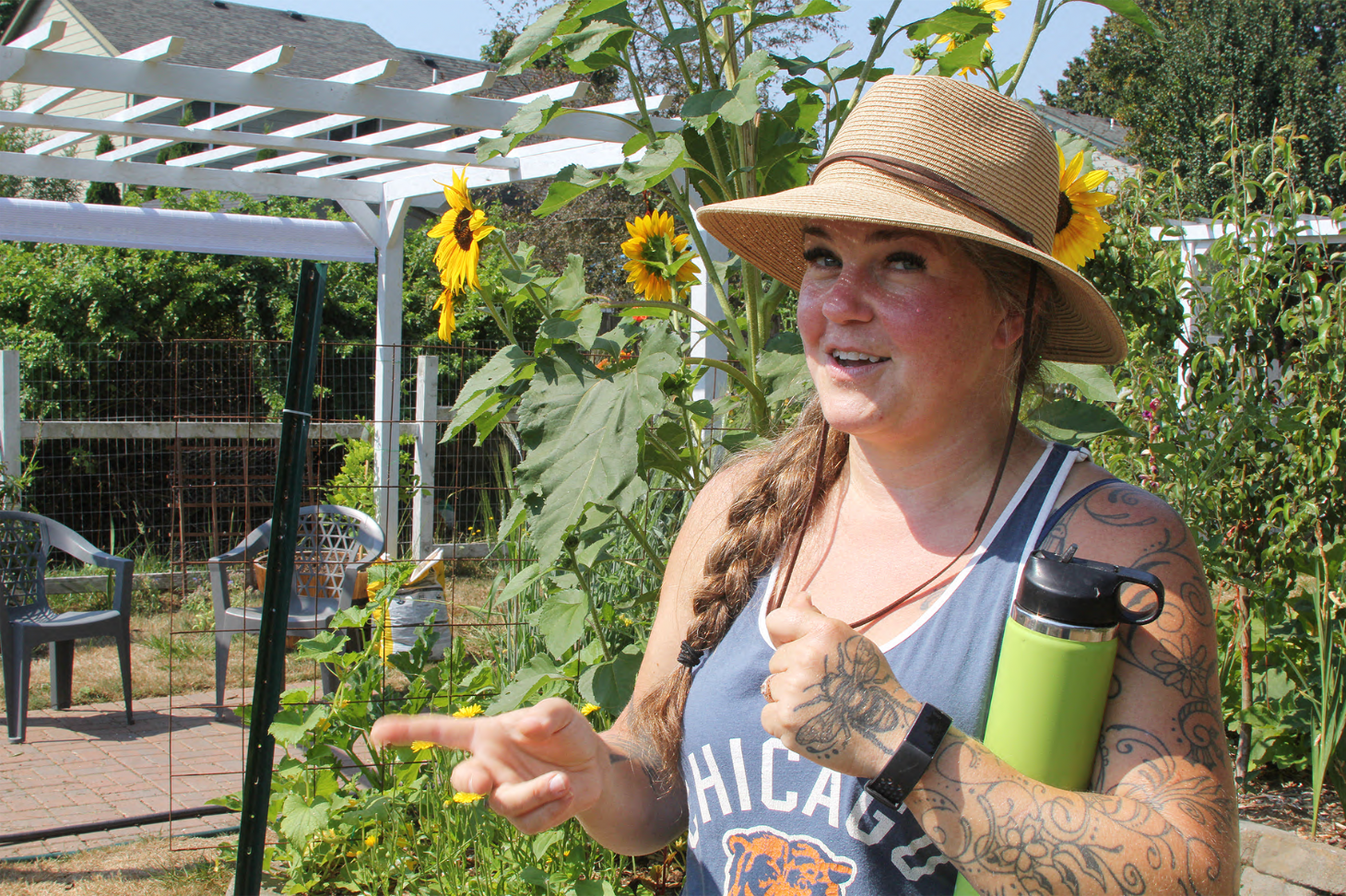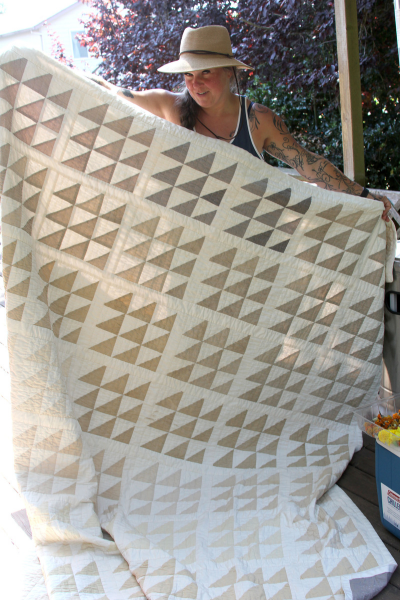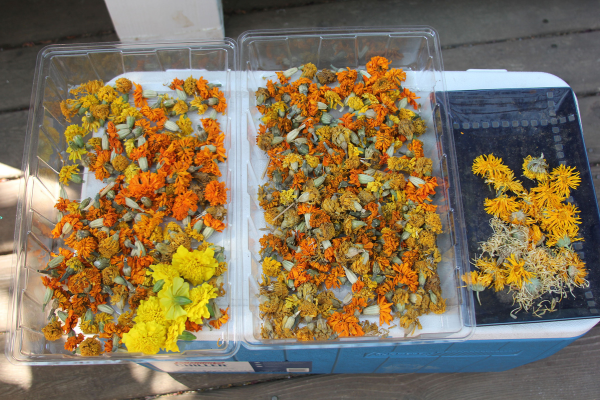News, articles, and interesting stuff from the College of Business
A life in bloom: Instructor Marianne Dickson cultivates natural dyes
Senior Instructor of Apparel Design Marianne Dickson’s popular natural dye course has opened the eyes of many students to the possibilities of using botanical dye in their designs.

On a warm day in mid-August, Senior Instructor of Apparel Design Marianne Dickson ’05 stood in the middle of her sprawling garden, checking on her marigolds. Smiling under a broad brimmed sunhat, she surveyed her domain as hens clucked in the distance.
Since she and her family moved to their one-acre property in Adair Village just months before the COVID pandemic, they transformed a large part of their acreage into a fenced collection of raised beds, currently filled with vegetables and flowers. While some flowers were selected for their beauty alone, Dickson has carefully cultivated many blooms for their use in botanical dyes, which she’s been experimenting with for more than six years.
Dickson received her master’s from the Oregon State in 2005. Her popular natural dye course has opened the eyes of many students to the possibilities of using botanical dye in their designs.

She started experimenting with natural dye after a friend gave her some flowers for her garden and casually mentioned that you could make dye from the blossoms. Dickson was immediately intrigued, because she knew synthetic dyes were difficult to dispose of and could be quite toxic.
“I scoured the Internet for information on natural dyes, and I found a lot of people in Corvallis who knew about it,” she said.
She first became enamored with lac, a natural red dye that comes from the resin of southeast Asian insects. Then she started experimenting with indigo, ruining plenty of kitchen pots in the process. Her young sons quickly got involved, fascinated to watch the indigo dye the cloth green, and then watch it slowly change to blue as it dried on the line.
But her real love has become the vibrant yellow dye she can extract from marigolds in her own garden. While lac and indigo have to be imported, marigolds are profuse during Oregon summers and a small handful of blooms can provide a massive amount of golden dye.
It was only natural that her newfound passion would make its way into her classroom. Sustainable, earth-friendly approaches to fashion have broad appeal among a generation brought up under the reality of climate change, and Dickson has found students have a strong interest in making clothing more eco-conscious.
Dickson, who as a design student used to dream of living in London and working for Alexander McQueen, said a lot of her students have big plans to work with major companies and designers. But through her classes, she hopes students will bring natural fabric techniques to large companies and encourage industry shifts away from fast fashion and toxic chemicals.
“I ask them to think about what they can bring to the industry that can make it different, and to get corporations to understand that the clients are out there who want to buy sustainably produced fashion,” she said.
Natural dyes also help students connect with their roots, like the student who grew up in a ranching community in Montana and has become fascinated with dyed wool, or the Mexican American student whose family cultural practices involved using marigolds.

“The gateway drug for botanical dyes is definitely the marigold,” she said.
Dickson sources her dyes and her flower seeds from small companies on the West Coast who ethically source their items. When she teaches students about using natural dye, she emphasizes examining the whole supply chain, and getting local products whenever possible, so that each step of the process from seed to plant to dye to fiber involves trusted, knowledgeable sources.
Dickson has partnered with other faculty on campus as well, including bringing her dyes to a class on color at the Honors College, and most recently, lending her dye expertise to a joint fashion project between design students and the Global Hemp Innovation Center. She hopes to continue expanding her partnerships in the future and spreading the knowledge and love of natural dyes to new students.
“We are so disconnected from the clothing we buy today,” she said. “I ask students, can you do it locally? How easy is it to get dye from marigolds, get wool from a sheep in Salem, sew a skirt yourself and come full circle.”
-Story and photos by Theresa Hogue, courtesy of OSU Today